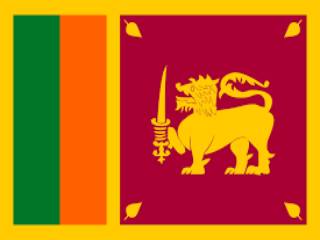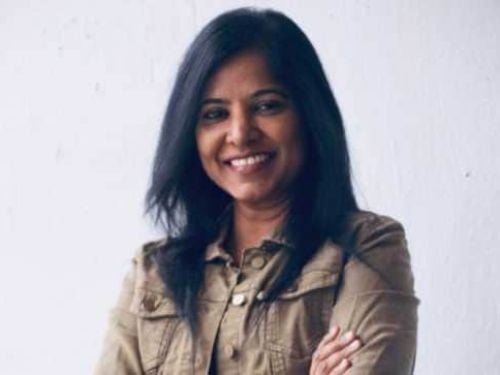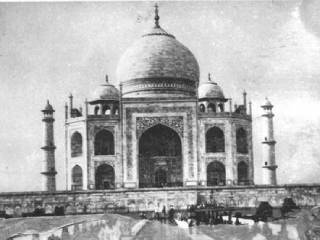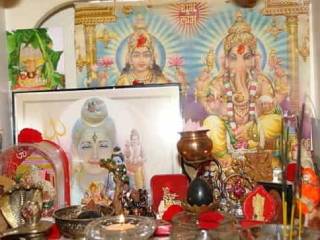By Eric Bellman
Brahmins, as Hinduism’s priestly and scholarly caste, have traditionally occupied a place of privilege in India.
Brahmins have been advisers to Maharajas, Mughals and military rulers. Under British rule, they served as administrators, a position they kept after Indian independence in 1947.
But in today’s India, high-caste privileges are dwindling, and with the government giving extensive preferences to the lower-caste majority, many Brahmins are feeling left out of the economy’s rapid expansion.
R. Parameswaran has suffered that reversal of fortune. The 29-year-old starts every day with a prayer to the Hindu god Shiva, marking his forehead with red and white powder to let the world know he is a Brahmin. In his home village, his caste’s mark brought him respect, but since he moved to Chennai, a sprawling high-tech city in the southern state of Tamil Nadu, in the late 1990s, he has found his status a liability.
In Tamil Nadu, nearly 70% of government jobs and public-college slots are reserved for people from lower castes and other historically disadvantaged groups. Although he says he graduated near the top of his high-school class and had strong test scores, Mr. Parameswaran couldn’t get into any of the state engineering colleges. His family had to borrow from friends to send him to a second-rate private college.
He now teaches English at a small vocational school. On a salary of $100 a month, Mr. Parameswaran can’t afford an apartment, so he sleeps in the classroom at night. "I am suffering," says the intense young man, using the exaggerated enunciation of an English teacher. "Unfortunately, I was born as a Brahmin."
Although the role of Brahmins has never been synonymous with accumulating wealth, many are affluent enough to educate their children in the better private schools. On average, members of the caste, who make up about 5% of India’s population of 1.1 billion, are better educated and better paid than the rest of Indian people.
The term Brahmin has come to be used globally to describe those at the top of the heap with an attitude to match, as in Boston Brahmins. Yet close to half of Brahmin households earn less than $100 a month, according to the Center for a Study of Developing Societies, a New Delhi think tank. For these Brahmins, the array of state-mandated preferences for other groups present a high hurdle.
The reverse discrimination is rooted in Indian history and politics. For decades, Brahmins were resented for their dominance of the government, economy and culture. Indeed, political parties in Tamil Nadu sprang from anti-Brahmin feelings. "If you see a Brahmin and a snake, kill the Brahmin first" was an old slogan.
A national constitution adopted in 1950 reserved more than 20% of government jobs for lower castes. In 1990, an additional 27% were set aside for what were called "other backward castes." Some states set higher quotas, including Tamil Nadu, which reserves 69% of government jobs for lower castes and other needy groups.
The ugliest Brahmin bashing in India ended years ago, but Mr. Parameswaran says that in college in the late 1990s, he still faced ridicule as a Brahmin. He says one student tried to break his sacred thread, a simple circle of twine Brahmins wear under their clothes.
After college, he had an internship in a state-owned chemical company, but says he was told he wouldn’t be hired, as there were openings only for lower-caste applicants. He says he took exams to join national railways, state banks and other government agencies, such as the immigration department, but found most posts closed to all Brahmins except the most brilliant.
From his makeshift home where he sleeps with a blanket on a desk most nights, Mr. Parameswaran still applies for government jobs. He pulls out his latest application form and shows a visitor where he always gets stuck: the three squares where he has to write the abbreviation indicating his caste. "I want government work," he says, shaking the application, "but they have no jobs for Brahmins."
Mr. Parameswaran has tried to adapt to the lessening of caste distinctions taking place in many parts of India today, especially in cities. The changes are less in villages such as the one where he grew up some 200 miles away. There, his grandfather, who is 101 years old, still won’t wear Western clothes and won’t eat outside of his home for fear of mixing with lower castes.
Mr. Parameswaran’s father has a job with the state telephone company and is more liberal. He dresses in shirts and pants, doesn’t mind eating at restaurants and doesn’t expect lower-caste neighbors to take off their sandals in his presence.
Mr. Parameswaran has had good friends from lower castes all his life, many of whom have used their communities to grab good government jobs, he says. He won’t eat meat but has no qualms sharing a meal with people of any caste or creed. His 22-year-old sister, R. Dharmambal, is even more liberal, he says. "She will take non-vegetarian food," he exclaims, using the common Indian term for eating meat.
Mr. Parameswaran often visits the sister in the Brahmin enclave of Mylapore. On a recent day there, dozens of shirtless priests in the traditional Brahmin uniform of a white dhoti and partially shaved head were standing around at a Hindu-scriptures school, hoping for work. For as little as 100 rupees, about $2.50, they offered to perform complicated rituals and blessings required when any Hindu has a baby, a wedding or a new home.
"My sons can’t support me, so I have to survive by performing Hindu rituals," says K. Narayana, an 81-year-old scholar. "If we had been from another community, we would have had better opportunities."
Nearby stands the Kapaleeshwara Temple, with towering gates of colorful carvings from Hindu mythology. It is one of the most important places for worship for followers of Shiva, the Hindu god of destruction. The temple used to be surrounded by rows of simple single-story homes, each with its own courtyard and well so the Brahmin families wouldn’t have to share water with other castes. Most houses have been replaced by concrete apartment blocks and small stores.
At the temple’s back gate, Brahmins beg for spare change or look for odd jobs as cooks or even bearers of bodies to funeral pyres, normally a lower-caste pursuit.
"I see so many Brahmins begging" in Mylapore, Mr. Parameswaran says. "It’s very difficult to see. It makes me totally upset."
Source:http://online.wsj.com/article/SB119889387595256961.html

 Mizoram: EC accepts Christians’ demand to defer counting on Sunday, but what if Hindus had made a similar demand?
Mizoram: EC accepts Christians’ demand to defer counting on Sunday, but what if Hindus had made a similar demand? Sign Petition : Immediately repeal the draconian and unconstitutional ‘The Waqf Act, 1995’
Sign Petition : Immediately repeal the draconian and unconstitutional ‘The Waqf Act, 1995’ Shriram : Sri Lanka’s saviour
Shriram : Sri Lanka’s saviour Why it is so cool to malign Hindu gods and goddesses, but it may not be that easy now
Why it is so cool to malign Hindu gods and goddesses, but it may not be that easy now Shocking Truth of Taj Mahal exposed by Late Pujya P. N. Oak
Shocking Truth of Taj Mahal exposed by Late Pujya P. N. Oak How are Hindus treated in states where they are in a minority?
How are Hindus treated in states where they are in a minority?